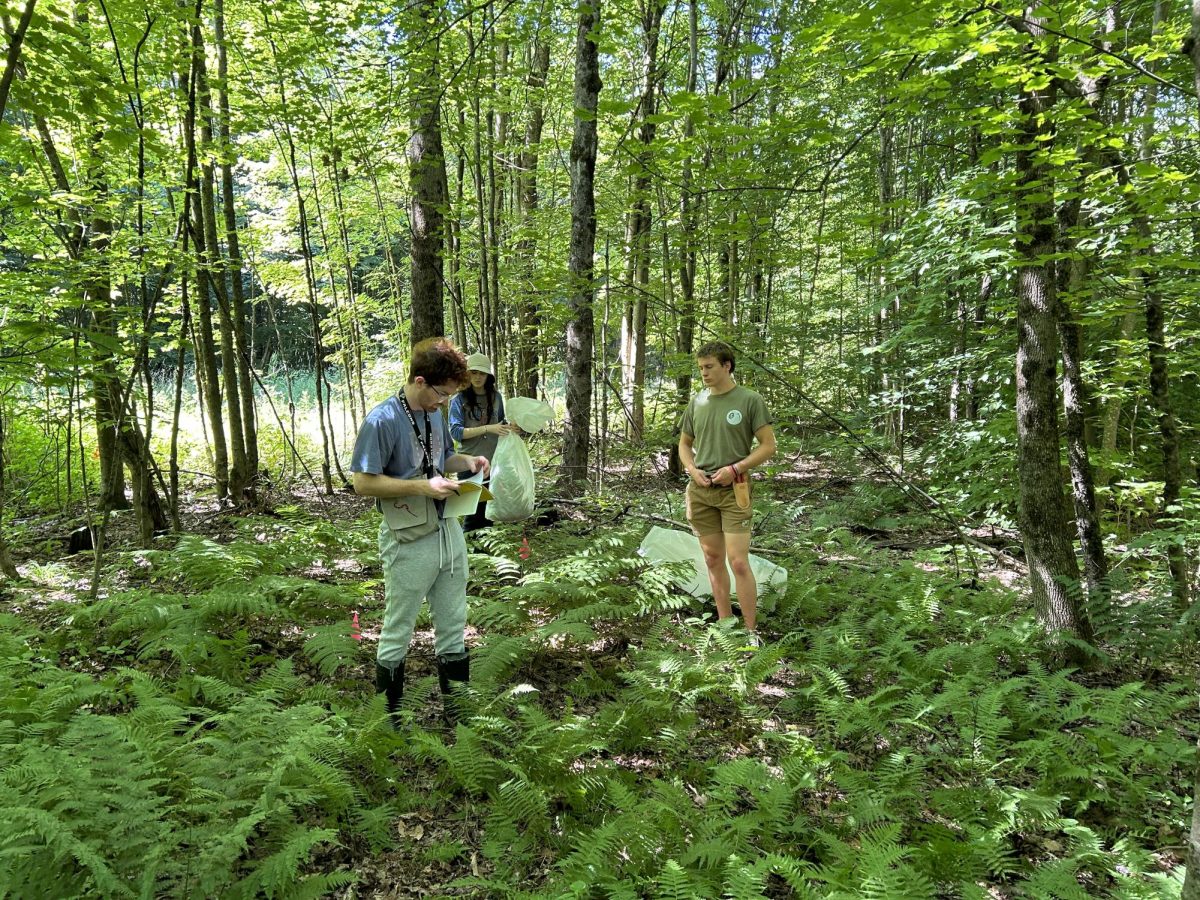Fern ecology research is a unique project taking place at Colgate University spearheaded by Professor of Biology James Watkins, who studies organismal plant ecology and physiology. Under his supervision and guidance, students join him in his research working across a variety of disciplines. Sophomore Jack Antonson, later joined by junior Matt Leopold and sophomore Theo Hauptman, spent the past summer doing research for the project, making his own conclusions about soil biology and ferns.
“Dr. Watkins has been doing this stuff forever,” Antonson said. “He is incredibly experienced in the field of fern ecology as he has been involved with the plants for almost 40 years now. He has some ideas for what he wants to do with his research, but he also gives us a directive to work on. So, almost the whole thing is run by students […]. There’s a lot of independence on how it goes.”
Antonson explained that the overall fern ecology research so far has focused largely on data collection, and they have yet to reach the phase of writing a paper. He co-led the project, titled “What Factors Influence the Distributions of Three Common Temperate Northern Ferns.”
“We are researching the ability to adjust leaf thickness in different species of ferns. This reflects something called phenotypic plasticity,” Antonson said.
The ferns they looked at were Dryopteris intermedia (DryInt), Claytosmunda claytoniana (OSmCin), and Onoclea sensibilis (OnoSen). Antonson explained that they specifically looked at the thickness of the species’ leaves at different light levels since they occupy different light environments. Based on their statistics and graphs, they found that sensitive ferns (Onoclea sensibilis) were more adaptive to different light regions. The group studied the relationship of the ferns’ specific leaf area (SLA) to their photosynthetic rates and found that the R2 value of the graphs, a statistical measure of how much of a dependent variable’s variation is explained by a given independent variable, was not very informative of an obvious trend.
“So, basically, what we decided is there’s still more research to do, and there are more variables to think about in terms of why SLA value is what it is, and we can hopefully make another graph,” Antonson stated.
The project plans on recording the density and light intensity of the measured ferns as part of their future work. Antonson also described that they took a sample of soils from each of the 200 ferns that they looked at over the summer. In their lab, they have treated them, dried them and are now currently studying the water holding capacity. More information about Antonson and his fellow lab members’ efforts can be found on the first floor of the Robert H.N. Ho Science Center, where large poster displays detail their projects.
Antonson remarked how he got into research at Colgate and described how other students can do the same.
“At the end of my freshman year, I met Dr. Watkins by chance, and he had an empty spot for summer research,” Antonson said. “If you’re interested [in student research], reach out to a professor who is doing any kind of research. It doesn’t matter what, especially if you are a sophomore or freshman as the experience of a professional in any STEM field applies to all the others.”















